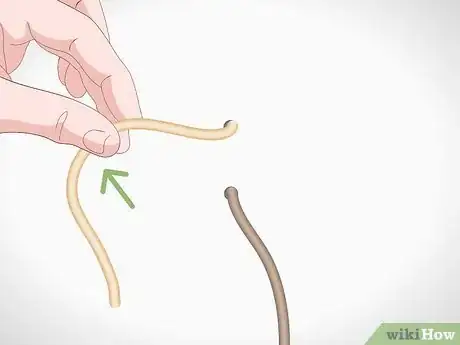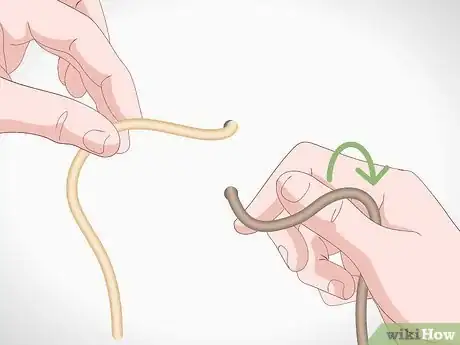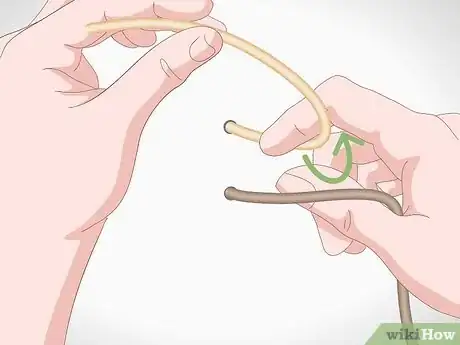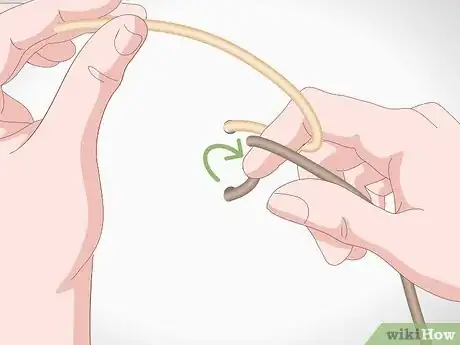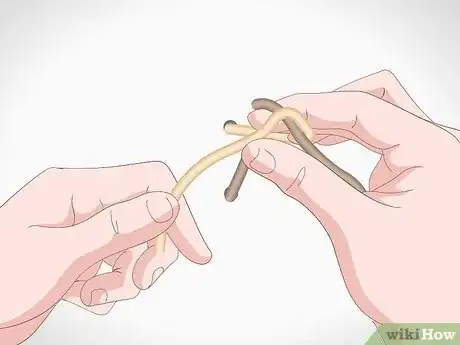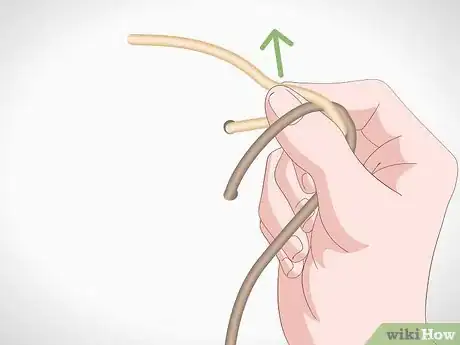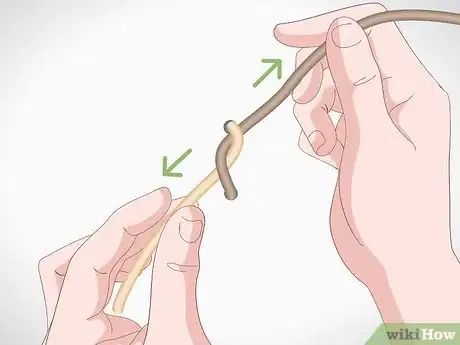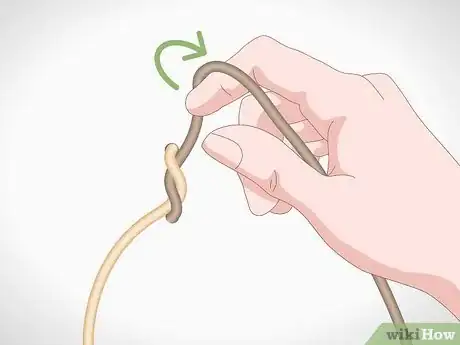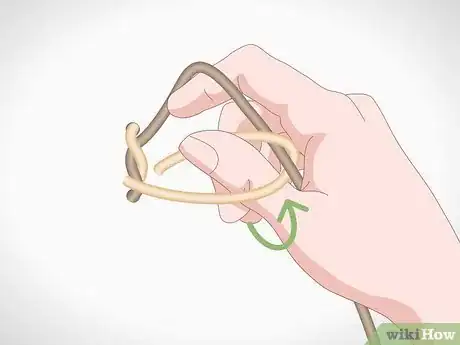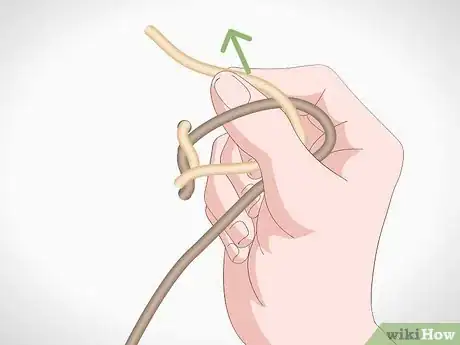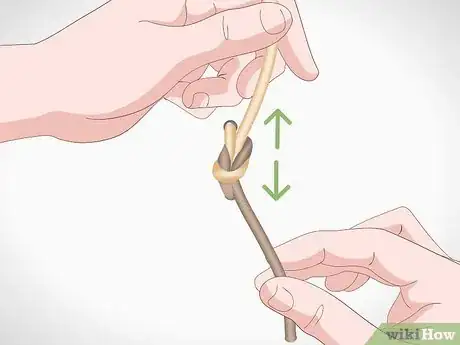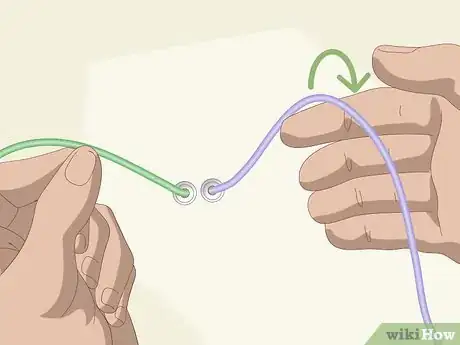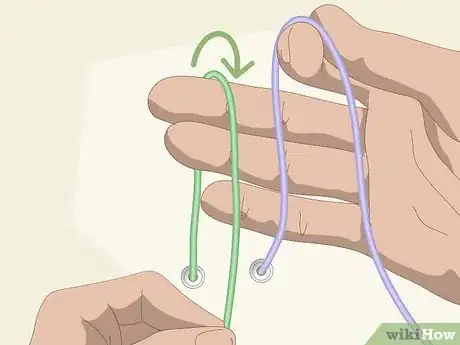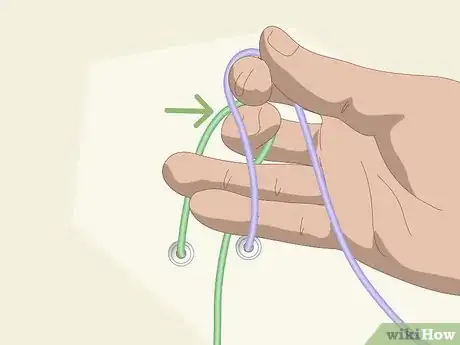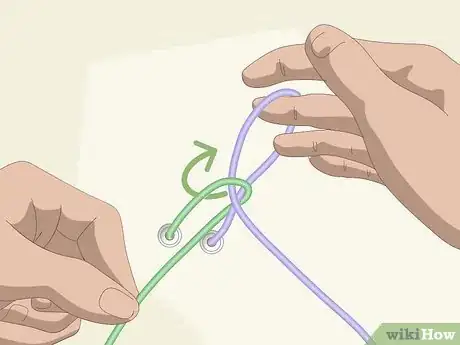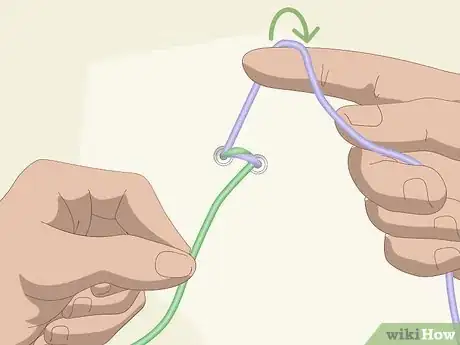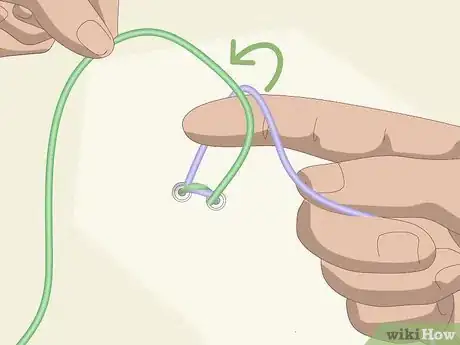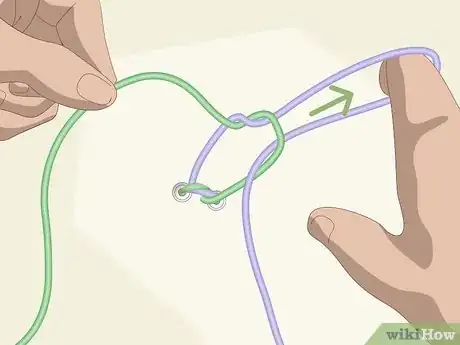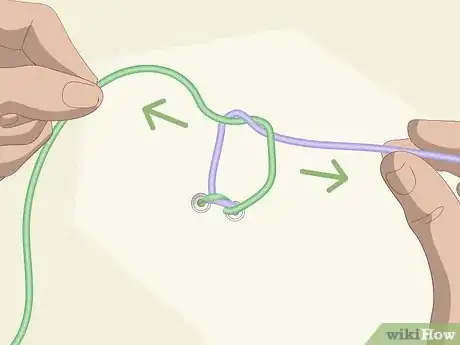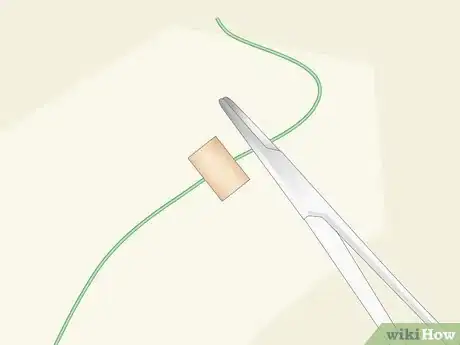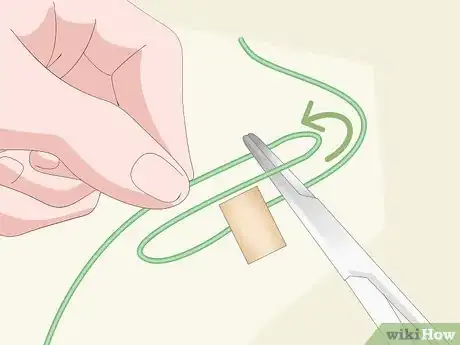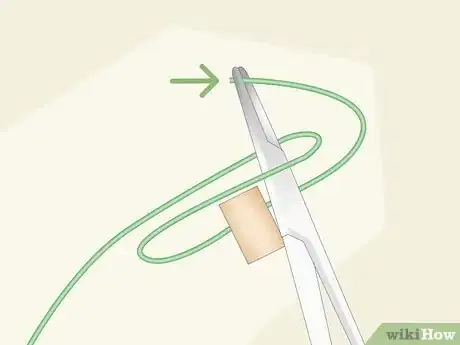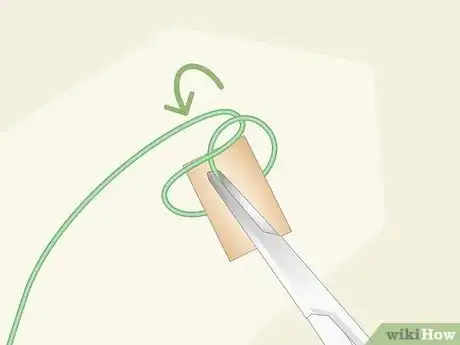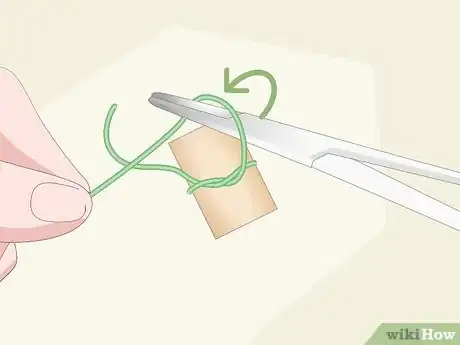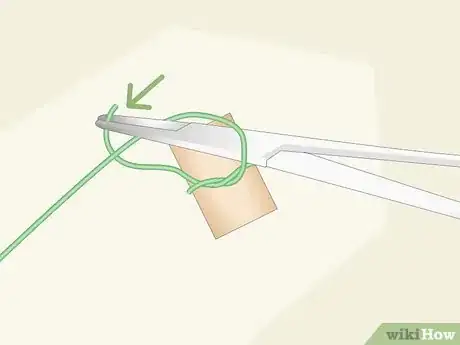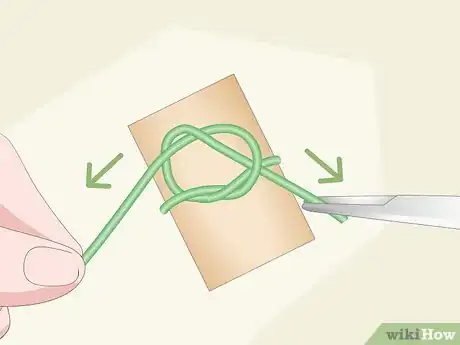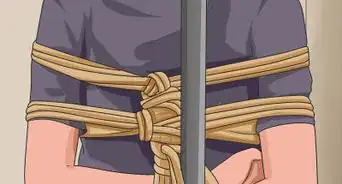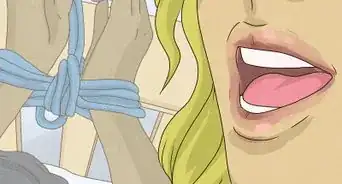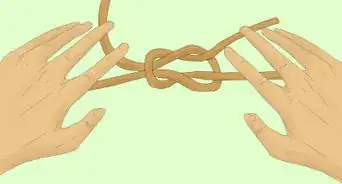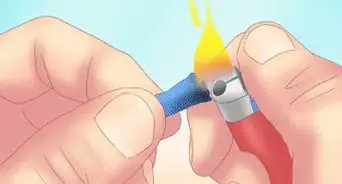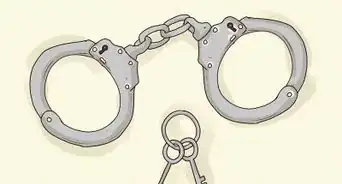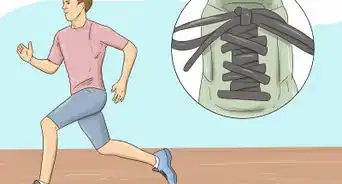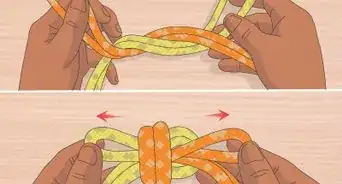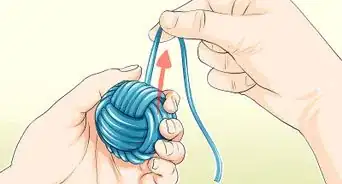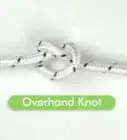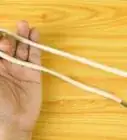This article was co-authored by wikiHow Staff. Our trained team of editors and researchers validate articles for accuracy and comprehensiveness. wikiHow's Content Management Team carefully monitors the work from our editorial staff to ensure that each article is backed by trusted research and meets our high quality standards.
There are 11 references cited in this article, which can be found at the bottom of the page.
This article has been viewed 33,331 times.
Learn more...
Tying surgical knots is an essential skill if you’ll be in an operating room. There are 3 basic methods. When learning how to tie a surgical knot, begin by trying the two-handed method. This is the simplest and quickest method to learn. Once you become comfortable with this, practice tying the knot one-handed or with a pair of forceps. While these methods are harder to learn, they’re faster and more efficient. All 3 methods take lots of practice to master, so be patient and don’t give up!
Steps
Tying a Surgical Knot Two-Handed
-
1Hold the short end of the string with your left hand. Start with the short end away from you. Hold it with your index finger and thumb. Raise the string so that it’s standing vertically.[1]
- These instructions are for right-handed people. If you’re left-handed, just reverse the instructions.
-
2Wrap the long end over the thumb of your right hand. Hold the long end so that it wraps over your thumb and then into your palm. Grab onto it like you would the handle of a bicycle. Then rotate your hand so that your thumb is facing upward.[2]Advertisement
-
3Extend your right index finger and hook it around the short end. Hook onto the portion of the short end that’s below your left hand. Use your right index finger to pull the short end toward you. Bring it close to the long end.[3]
-
4Slip your right index finger underneath the long end. Keep your right index finger hooked around the short end. Put the long end on top of your right index finger.[4]
- By the end of this step, your right index finger should be sandwiched between the short end and the long end.
-
5Grip the short end with your right thumb and index finger. Bring the short end over the long end by moving your left hand toward you. Grasp the short end securely.[5]
-
6Push the short end underneath the long end. Rotate your right hand to the right. Slide the piece of the short end you’re pinching underneath the long end that’s draped over your index finger.[6]
- Continue to pinch the short end through this step.
-
7Pull the short and long ends to tighten your half knot. Grasp the short end with your left hand and the long end with your right hand. Pull them in opposite directions to make a tight half knot.[7]
- Pull the short end toward you and the long end away from you.
-
8Loop the long end over your right index finger. Hold onto the long end as if you’re grabbing a bicycle handle. Then extend your index finger. Rotate your hand so that the long end loops over your index finger.[8]
-
9Hook your right thumb around the short end. As you bring the short end toward the long end with your thumb, release the long end from your index finger and drape it over your right thumb.[9]
- By the end of this step, the short end should be looped under your thumb, and the long end over your thumb.
-
10Grip the short end with your thumb and index finger. After looping your thumb around the short end, pull the short end over the long end. Pinch the short end securely.[10]
-
11Push the short end through the loop around your thumb. Keep pinching the short end with your right-hand thumb and index finger. Slide it underneath the long end.[11]
-
12Pull the two ends to complete your knot. Once the short end is through the loop, pull the two ends in opposite directions. Pull the long end toward you and the short end away from you. Pull slowly and gently so you don’t break the string.[12]
Using One Hand to Tie
-
1Hold the short end in your right hand with it looped over your index finger. Start by grabbing the short end as you would a bicycle handle. Then extend your index finger and rotate your hand so that the string loops around your index finger. Extend your other fingers so they’re behind the string.[13]
- Hold the long end of the string with your left hand.
- Throughout this process, you should not move your left hand.
- Tying a one-handed surgical knot is more difficult than a two-handed knot, so getting lots of practice is especially important.
- These instructions are for right-handers. If you’re left-handed, just reverse the instructions.
-
2Drape the long end around your right-hand fingers. Wrap the long end from your middle finger down toward your little finger. Keep hold of the short end with your thumb. [14]
- Try to keep your left hand still throughout the one-handed tying process.
-
3Use your right-hand middle finger to pull the long end underneath the short end. As you do this, keep the short end steady by pinching it with your right-hand thumb and index finger. Keep the long end taut with your left-hand thumb and index finger.[15]
- The long end and short end should form a cross over your 2 smallest fingers.
-
4Pull the short end underneath the long end and pull tight. Use your middle finger and thumb to push the short end through. Then pull the ends in opposite directions to tighten your knot.[16]
- This step will give you a finished half knot.
-
5Loop the short end over your extended index finger. Grab the short end as you would a bicycle handle, as you did at the beginning of this process. Then extend your index finger and rotate your hand so that the short end wraps around your index finger.[17]
- Hold the long end of the string with your left hand.
-
6Wrap your right index finger around the long end. Hold the long end with your left-hand thumb and index finger. Keep a hold on the short end with your right-hand thumb and middle finger.[18]
- The long end and short end will make a loop around your index finger.
-
7Pull the short end through the loop around your index finger. Use your middle finger and thumb to maneuver the short end over the long end. Then rotate your index finger to pull it through the loop.[19]
-
8Tighten the two ends. Pulling the two ends apart will help secure your knot. Pull the long end away from you and the short end toward you.[20]
- Repeat the above steps if you want or need to tie a second square knot.
Mastering the Instrument Tie
-
1Position a pair of forceps perpendicular to the string. Hold the forceps in your right hand, and point them to the left. Keep the forceps just above the string.[21]
- When setting up, keep the short end of the string away from you.
- These instructions are for right-handed readers.
-
2Use your left hand to loop the long end of the string around the forceps. Pinch the long end of the string with your left-hand thumb and index finger. Then, take it up and away from you, and over the forceps.[22]
-
3Grasp the tip of the short end with the forceps. With the long end of the string looped around the forceps, rotate the forceps away from you and toward the short end. Make sure you grasp the short end tightly with the forceps.[23]
- Continue to hold onto the long end with your left hand during this step.
-
4Pull the short end through the loop around your forceps. Once you pull the short end through the loop with the forceps, continue to pull the short end toward you and the long end away from you. Tighten the two ends to make your half knot.[24]
- Once you tighten this knot all the way, you can let go of the short end.
-
5Wrap the long end of the string around your forceps. Hold the forceps in your right hand and keep them above and perpendicular to the string. Point the tip of the forceps to your left. Grab the long end, which should be away from you, with your left hand. Then, bring it up, over the forceps, and toward you.[25]
- By the end of this step, the long end should be looped over your forceps.
-
6Grab the tip of the short end with your forceps. With the long end looped around your forceps, rotate the forceps toward the short end. After grabbing the short end, bring it up and toward the loop around your forceps.[26]
-
7Bring the short end through the loop around your forceps to finish. Once you pull the short end through the loop, tighten the knot by pulling the two ends away from each other. When you’ve tightened this knot, repeat all these steps to tie another knot, or let go of the short end with your forceps to finish.[27]
References
- ↑ https://www.animatedknots.com/surgical-tie-knot-two-hands-technique
- ↑ https://www.animatedknots.com/surgical-tie-knot-two-hands-technique
- ↑ https://www.animatedknots.com/surgical-tie-knot-two-hands-technique
- ↑ https://www.animatedknots.com/surgical-tie-knot-two-hands-technique
- ↑ https://www.animatedknots.com/surgical-tie-knot-two-hands-technique
- ↑ https://www.animatedknots.com/surgical-tie-knot-two-hands-technique
- ↑ https://www.animatedknots.com/surgical-tie-knot-two-hands-technique
- ↑ https://www.animatedknots.com/surgical-tie-knot-two-hands-technique
- ↑ https://www.animatedknots.com/surgical-tie-knot-two-hands-technique
- ↑ https://www.animatedknots.com/surgical-tie-knot-two-hands-technique
- ↑ https://www.animatedknots.com/surgical-tie-knot-two-hands-technique
- ↑ https://www.animatedknots.com/surgical-tie-knot-two-hands-technique
- ↑ https://youtu.be/uFJbTbjeU4Y?t=44
- ↑ https://youtu.be/uFJbTbjeU4Y?t=61
- ↑ https://youtu.be/uFJbTbjeU4Y?t=67
- ↑ https://youtu.be/uFJbTbjeU4Y?t=78
- ↑ https://youtu.be/uFJbTbjeU4Y?t=88
- ↑ https://youtu.be/uFJbTbjeU4Y?t=103
- ↑ https://youtu.be/uFJbTbjeU4Y?t=111
- ↑ https://youtu.be/uFJbTbjeU4Y?t=129
- ↑ http://www.bumc.bu.edu/surgery/training/technical-training/instrument-tie/
- ↑ http://www.bumc.bu.edu/surgery/training/technical-training/instrument-tie/
- ↑ http://www.bumc.bu.edu/surgery/training/technical-training/instrument-tie/
- ↑ http://www.bumc.bu.edu/surgery/training/technical-training/instrument-tie/
- ↑ http://www.bumc.bu.edu/surgery/training/technical-training/instrument-tie/
- ↑ http://www.bumc.bu.edu/surgery/training/technical-training/instrument-tie/
- ↑ http://www.bumc.bu.edu/surgery/training/technical-training/instrument-tie/
